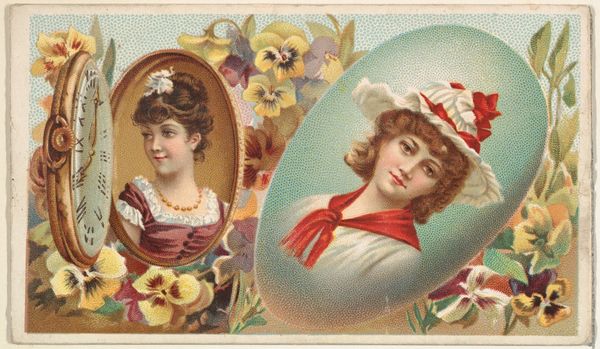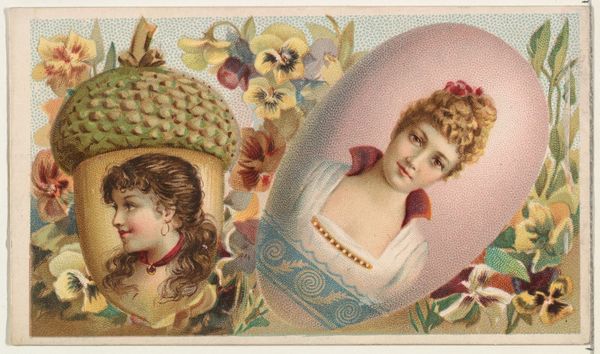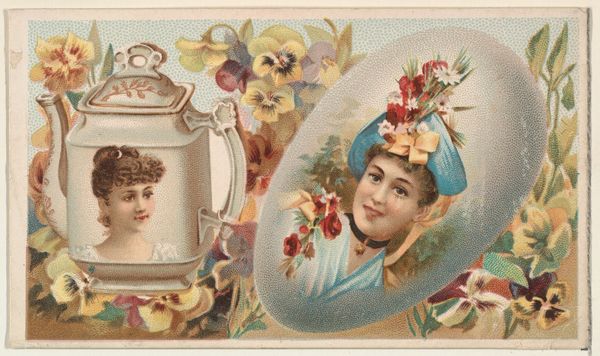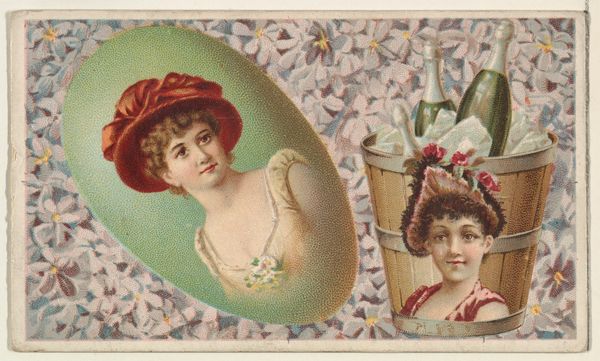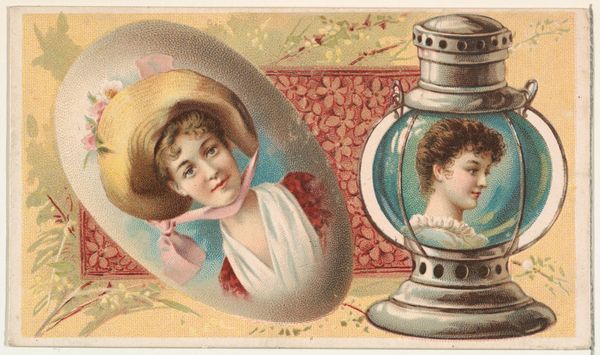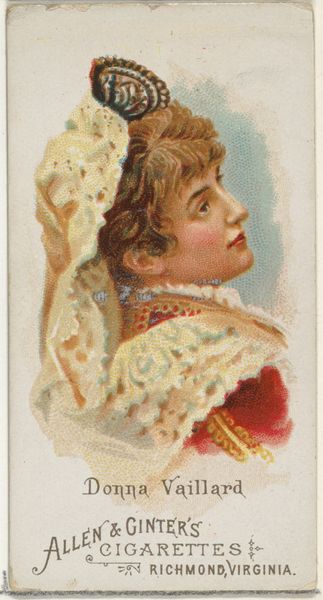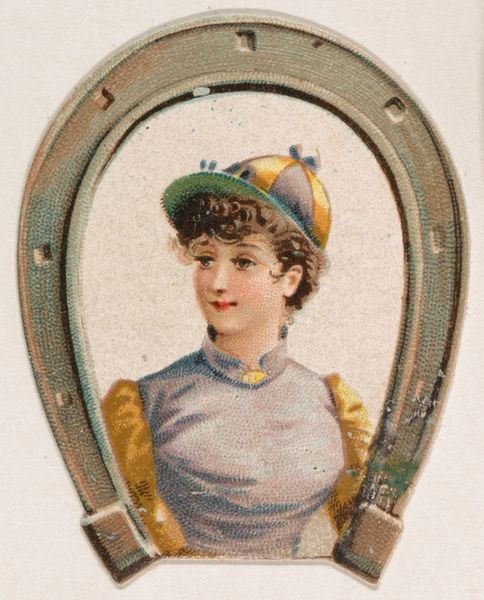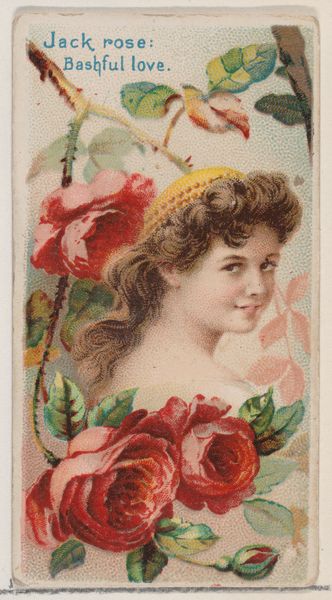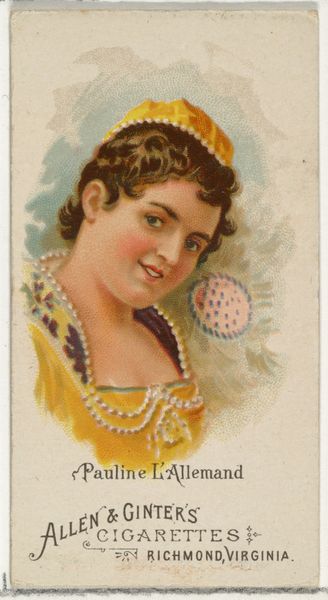
Horseshoe, from the Miniature Novelties series (N120) issued by Duke Sons & Co. to promote Honest Long Cut Tobacco 1891
0:00
0:00
Dimensions: Sheet: 2 1/2 × 4 1/4 in. (6.3 × 10.8 cm)
Copyright: Public Domain
Editor: This is a piece titled "Horseshoe," made in 1891 by W. Duke, Sons & Co. It's a print, and it looks like it incorporates colored pencil and drawing. It's quite charming, actually; feels like a little glimpse into another world. What do you see when you look at it? Curator: Ah, yes, these cards. Pocket-sized portals to bygone eras! I find myself pondering the duality of imagery here. The juxtaposition of the women – one framed by the fanciful egg shape, almost like an exotic bloom, and the other literally framed by the horseshoe, suggesting luck, sport, and a more direct association with fortune. Do you feel that tension too? Editor: Absolutely, it’s a study in contrasts! One feels ornamented, theatrical, while the other is presented more straightforwardly. Were these types of images common? Curator: They were immensely popular. Trade cards, like this one used to promote Honest Long Cut Tobacco, became miniature works of art, little affordable luxuries tucked into everyday life. They offered a tantalizing peepshow into a world of fashion, sport, and aspirational lifestyles. And consider the symbolism. The horseshoe, of course, a universal sign of good luck, but also potentially alluding to the excitement of the racetrack, and wagering. And perhaps a cheeky nod to taking a chance with their tobacco? Editor: So, it's almost like a tiny advertisement acting as a cultural snapshot? Curator: Precisely! Each element carefully chosen to appeal to the consumer's desires and aspirations. Makes you wonder what future archaeologists will make of our targeted ads, doesn't it? Editor: Definitely gives me a new appreciation for these little historical artifacts. Thanks for that deeper perspective. Curator: My pleasure! Art, even in miniature, has such grand stories to tell. It’s always rewarding to tease them out.
Comments
No comments
Be the first to comment and join the conversation on the ultimate creative platform.
